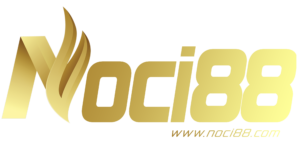Trace the transactions from the detailed list to your bank statement. When you should i invest $200000 in an annuity have a match, click the radial button next to the transaction and place a checkmark next to the transaction on your bank statement. When you click a radial button, the transaction will be reflected in the summary of cleared transactions at the top of the screen. Just like balancing your checkbook, you need to review your accounts in QuickBooks to make sure they match your real-life bank and credit card statements. This will make the reconciliation process much easier.
Reconcile a bank, credit card, or petty cash account
You may have to go back many months and then move forward, reconciling one month at a time. The top of the report will display summary information similar to selling on etsy andyour taxes the top of the reconciliation screen. Perhaps the most useful information on the report is the list of uncleared, or outstanding, checks and deposits, which you’ll find at the bottom. If your beginning balance in your accounting software isn’t correct, the bank account won’t reconcile. This can happen if you’re reconciling an account for the first time or if it wasn’t properly reconciled last month. You may need to go back to previous months to locate the issue.
Data entry error
If the balances do not reconcile, you can check through your accounting records to see where the discrepancy is. There could be many reasons why the bank statement does not match up with your accounting records. When you create a new account in QuickBooks, you pick a day to start tracking transactions. You enter the balance of your real-life bank account for whatever day you choose. We recommend setting the opening balance at the beginning of a bank statement.
- These reports provide a summary of the reconciled transactions and help you review the reconciliation process and its results.
- If you’re reconciling an account for the first time, review the opening balance.
- If you’re not careful, your business checking account could be subject to overdraft fees.
- Just like balancing your checkbook, you need to review your accounts in QuickBooks to make sure they match your bank and credit card statements.
- Now, simply compare the transactions on your statement with what’s in QuickBooks.
Alternatively, if you want to access and review reconciliation reports without going through 6 free online bookkeeping courses with certificates the reconciliation screen, you can navigate to the Reports tab in QuickBooks. Locate “Reconciliation Reports” in the report center, and QuickBooks will take you to the History by account screen. Here, you can track reconciliation history and access reports at any time.
Next steps: Review past reconciliations
Most reconciliation modules allow you to check off outstanding checks and deposits listed on the bank statement. The beginning balance in the summary at the top of the QuickBooks reconciliation screen must equal the beginning balance on your bank statement. If you reconciled the account successfully in the prior month, yet your beginning balance doesn’t match your bank statement, then a previously cleared transaction has changed. QuickBooks will provide a link on the screen where you input the statement summary to help you find the changed transaction.
Match your transactions
Since all of your transaction info comes directly from your bank, reconciling should be a breeze. Mark Calatrava is an accounting expert for Fit Small Business. After clicking Finish now, QuickBooks will display a confirmation with a link to view the reconciliation report. If your sidebar menu is not what is shown in our tutorial, it means that you are on Business View.
Read on to learn about bank reconciliations, use cases, and common errors to look for. For instance, forgetting to record automatic withdrawals in QuickBooks is a common mistake, and banks occasionally make mistakes as well. Additionally, QuickBooks Online’s bank reconciliation feature can catch any fraudulent transactions in your account.
You’ll be able to identify discrepancies, such as bookkeeping errors or omissions. If your difference is, for example, $21.50, then look for a transaction for this amount on either your bank statement or the QuickBooks list of transactions. You can click on the amount column in the QuickBooks reconciliation screen to sort the transaction by amount. Choose the bank account you want to reconcile in QuickBooks, then enter the ending account balance and date from your bank statement.
To reconcile means to “make one view or belief compatible with another.” In accounting, that means making your account balances equal to one another. More specifically, a bank reconciliation means balancing your bank statements with your bookkeeping. Just like balancing your checkbook, you need to review your accounts in QuickBooks to make sure they match your bank and credit card statements.




